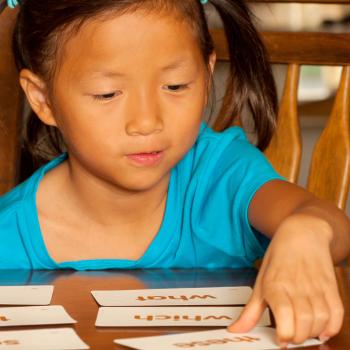Introducing Ideas and Vocabulary with the Concept Sort

About this Strategy Guide
A Concept Sort is a vocabulary and comprehension strategy used with students to introduce new topics and/or familiarize students with new vocabulary. Concept Sorts can be used before reading to gather students' prior knowledge about the upcoming content, or can be used after reading to assess students' understanding of the concepts that were presented to them. Additionally, these sorts help students use critical thinking skills by creating categories for groups of words as they sort them based on each word's meaning. Have students brainstorm a list of words from reading material or an upcoming unit, lesson, or text (sometimes the word list may need to be provided by the teacher). Students then discuss each word and place it in its correct category; categories can either be defined by the teacher or students.
Research Basis
To ensure student understanding of a new topic or to familiarize them with new vocabulary, it is important to do pre-reading activities to introduce them to these new words and topics. Concept Sorts allow the teacher to introduce new vocabulary to students that they will see in an assigned text. Additionally, strategies such as the Concept Sort show teachers about students’ prior knowledge of a topic. This strategy can also be used as a post-reading activity to assess students' understanding and knowledge.
Strategy in Practice
- If the goal of the lesson is to teach students about a difference in concepts (such as gigantic/miniature), gather objects or pictures that can be used to demonstrate these categories. If the goal is to preview vocabulary in an upcoming lesson or text, choose 10-15 relevant vocabulary words from the upcoming activity/text, or have the studens choose words they don't know.
- Using the chosen words, and encouraging input from students, sort the words/cards/objects into meaningful groups. With students’ help, name the categories in which you’ve placed all of the words/cards/objects. As you sort these words as a class, ask the students for their reasoning as to why they feel that each of the words fit into the named categories.
- Provide the students with 10-15 new words and have them sort them into meaningful groups individually or in small groups. You may choose to have students do a closed sort, where groups/categories are predefined by the teacher, or an open sort, where students name the groups/categories.
- After students have had ample time to do their sorts, discuss the categories that they chose to use for the different groups. Have students describe to their peers why certain cards were placed within certain groups.
- To take the sort further, consider introducing students’ to the 2-circle or 3-circle Venn Diagram tools to compare and contrast similarities and differences. Additionally, consider using this strategy as a post-reading/post-studying activity to assess students' understanding.
Examples
Math
Concept sorts can be used to help students differentiate between geometric shapes. Students can sort the shapes based on number of sides, angle measurements, and other features.
| quadrilateral | dodecagon | square | oval |
| rectangle | rhombus | decagon | pentagon |
| diamond | triangle | circle | octagon |
Science
The following sort can help introduce students to different categories of animals.
1. Introduce the following terms and have students discuss them:
| horse | gerbil | lizard | bird |
| fish | cow | alligator | dog |
| whale | chicken | cat | shark |
2. Ask students to sort the words/terms in a way that is meaningful to them or into the following categories. Be sure to follow up to check for students’ understanding of the categories and words.
- Types of animals (mammals, amphibians, etc.)
- Animals that people have as pets
- Animals that live in similar places
Literature/Social Studies
Students can sort these vocabulary words from Esperanza Rising, putting them into the categories of:
- People
- Feelings
- Actions
- Other
Or, students can come up with their own categories by which to sort the words.
| reluctant |
migrant | anguish | repatriation |
| peasant | immigration | campensinos | laborer |
| bestow | abuelita | citizen | esperanza |